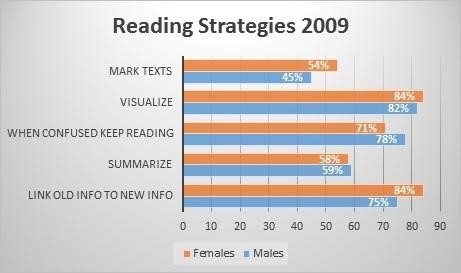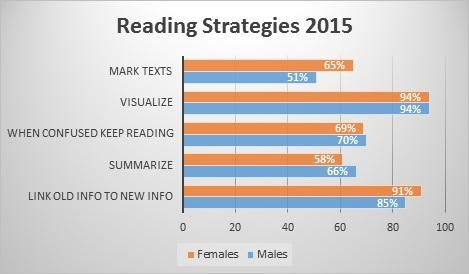Overview
Northern Essex Community College (NECC) in Massachusetts has been an Achieving the Dream Leader College since 2011. NECC serves a diverse student population of 5,975 students. A critical component to NECC’s success has been the creation of a “college success” seminar to support first year students. The success of this course has resulted in increased retention rates from 72.9 to 97.2 percent. NECC scaled the course up from 13 sections in Fall 2011 to 30 in Fall 2012, with the goal of eventually including all first-time students. In addition, NECC subsequentially broadened its Reading Apprenticeship implementation to include gateway courses which resulted an average full letter-grade improvement for students.
Challenges
- Build support for Reading Apprenticeship professional learning from a small, grassroots movement to campus-wide implementation
- Broaden support for academic literacy from first year seminar ad English courses to gateway courses across the disciplines
- Collect classroom data to support student progress
- Support all students to succeed in academically rigorous college level courses
Implementation of Reading Apprenticeship
Faculty and staff inquiry group builds support for literacy campus-wide
Faculty member Trish Schade was the key driver for the grass-roots movement for implementing Reading Apprenticeship at NECC. In 2007 Schade moved from to NECC with from California’s Merced Community College where she had recently participated in Reading Apprenticeship professional learning. From her experience using the Reading Apprenticeship framework in her classroom, she knew it was an approach that would work to support her NECC students in achieving deeper learning and academic success.
Schade decided to begin a project to introduce a campus-wide focus on literacy, with Reading Apprenticeship at the core—a SFIG. “Instead of just a FIG (Faculty Inquiry Group), limited to faculty,” Schade says, “we included staff as well—professional tutors, lab coordinators, a librarian.” She feels this was strategically important because it immediately increased the number of people who brought energy and commitment to the project, and literacy support to the students. The literacy inquiry group met monthly, tried out Reading Apprenticeship routines, presented what they were learning to other staff, and began to grow. The Dean of Professional Development supported the SFIG by funding four instructors to attend a Reading Apprenticeship seminar at WestEd that summer. They came back inspired.
Results
Seizing opportunities for institutional integration
In 2009, an institutional opportunity to increase the impact of the SFIG’s work arose. NECC administrators, with the help of an Achieving the Dream grant, decided to create a “college success” First Year Seminar course for academically underprepared first year students. Schade was on the committee designing the course and Reading Apprenticeship became part of the curriculum.
The College Success Seminar was a success. In 2011, 13 sections were offered. In 2012, NECC scaled-up to 30 sections. Retention rates also grew for this cohort of students who passed the course with grades A–C; new students in the Fall 2011 returned in the Spring of 2012 at a rate of 97.2 percent, as compared to the 72.9 percent retention rate for all students.
When NECC was named an Achieving the Dream “leader college” during this period, another institutional opportunity appeared. The AtD coaches urged the college to expand implementation of its “success” approaches. As Schade reports, “The coaches pointed out that we were doing a lot of great strategies for incoming underprepared students, but we did not have much in place for the regular first year gatekeeper type classes.” The NECC team followed this advice and came together to improve student success in “gatekeeper” courses, which are the first level of college courses in any given subject. The goal of the NECC team was to increase student retention and completion rates in these courses by improving students’ academic literacy through Reading Apprenticeship.
Reading Apprenticeship is a natural fit if a college is creating or beefing up an existing FYE (First Year Experience) program. It’s also a natural fit for the Integrated Reading and Writing and the Accelerated Learning initiatives bubbling up all over.
— Trish Schade, NECC faulty member
At this point, Schade says, “It was important to recruit respected and influential gateway faculty to participate in the team’s reading ‘think tank’ meetings.” And, she adds, by way of advice, “Invite them repeatedly and keep inviting. Once you get that energy and momentum going, others will join.”
More faculty were supported to participate in literacy professional development, this time in the online Reading Apprenticeship 101 course and for the next six years, the team headed a cross-campus implementation of Reading Apprenticeship. The team held monthly meetings, incorporated explicit literacy learning practices and collaboration into their classrooms, and led workshops for faculty, including organizing two statewide Reading Apprenticeship conferences.
Data collected by faculty in gateway courses reveals impressive gains
Faculty, staff, and students at Northern Essex Community College (NECC) in Massachusetts began to see meaningful changes in the student reader identity culture on their campus following several years of campus-wide Reading Apprenticeship.
As the team grew, faculty members began to collect data in gateway courses they were teaching, comparing results in sections where they incorporated Reading Apprenticeship with those where they did not. The results were an average full letter-grade improvement.
A Sample of Literacy Data Collected by NECC Faculty
ALL Courses Reading Apprenticeship strategies grades jumped an average of 10 points (or one letter grade)
| Faculty-Collected Data | Treatment | Student Outcomes |
|---|---|---|
| Business 101 | Reading Response Journal (4 classes) |
Treatment students’ grade average 82% vs. 68% |
| Dental Assisting 101 | Reading Journals (all classes for 3 years) |
Pass rate on state boards 100% last 2 years |
| Anthropology 101 | Talking to the Text (4 classes) |
Treatment students twice as likely to draw inferences from reading assignment |
| Biology 115 | Double-Entry Journal (2 classes) |
Treatment students’ grade average 86% vs. 74% |
| Chemistry 111 | Reading Journals (all classes) |
Higher-level student questions and increased engagement in discussion |
In a 2015 report, the NECC Transitions to Academic Success Achieving the Dream team shared student reading survey results that provide a look at NECC before and after their decision to implement Reading Apprenticeship.
To inform their plan for instructional change and measure the impact of their work, the cross-disciplinary team created and distributed a student reading survey in 2009. The survey questions were designed to reflect multiple facets of the reading process, including: reader identity, reading behaviors, and the different types of text with which students engaged.
Baseline data showed that only 35% of male students considered themselves readers, compared to 54% of female students. Students’ use of metacognitive reading strategies was varied, from only 45% of male readers marking texts as they read, to 84% of female students using visualization (see figure 1 below for more details).

The survey was issued again in 2015 and showed positive changes. More students reported that they considered themselves readers, with the highest increase among male students, which rose 9%. Students’ use and awareness of metacognitive reading strategies also increased, with reported improvements in marking up texts, visualizing, summarizing, and connecting their reading to prior knowledge, which rose as much as 12% in some categories (see figure 2 below for more details).
The team members were gratified to see such demonstrable results. As authors Emily Gonzales and Patricia Schade said in their report, “They say culture beats strategy, but here [at NECC] we can say the reader identity culture at Northern Essex Community College has been enhanced by Reading Apprenticeship strategies.”

The faculty-driven process Schade began at NECC was strengthened by finding ways to connect with larger institutional programs, such as the success course and AtD. Today, Reading Apprenticeship is incorporated into all of NECC’s Integrated Reading and Writing and Co-requisite ENG accelerated classes, and the framework is undergirding new projects supporting Early College students and incarcerated students.
Schade encourages faculty at other colleges to persevere with literacy goals armed with the knowledge that success is attainable over time. “This kind of change takes time to nurture, she says, “but most faculty want to help students read in their discipline, and some will be willing and hungry to incorporate Reading Apprenticeship strategies into their classes. The message should be that if enough folks who are interested start implementing Reading Apprenticeship strategies, if they share their results, and if they have support and professional development, it will grow.”

